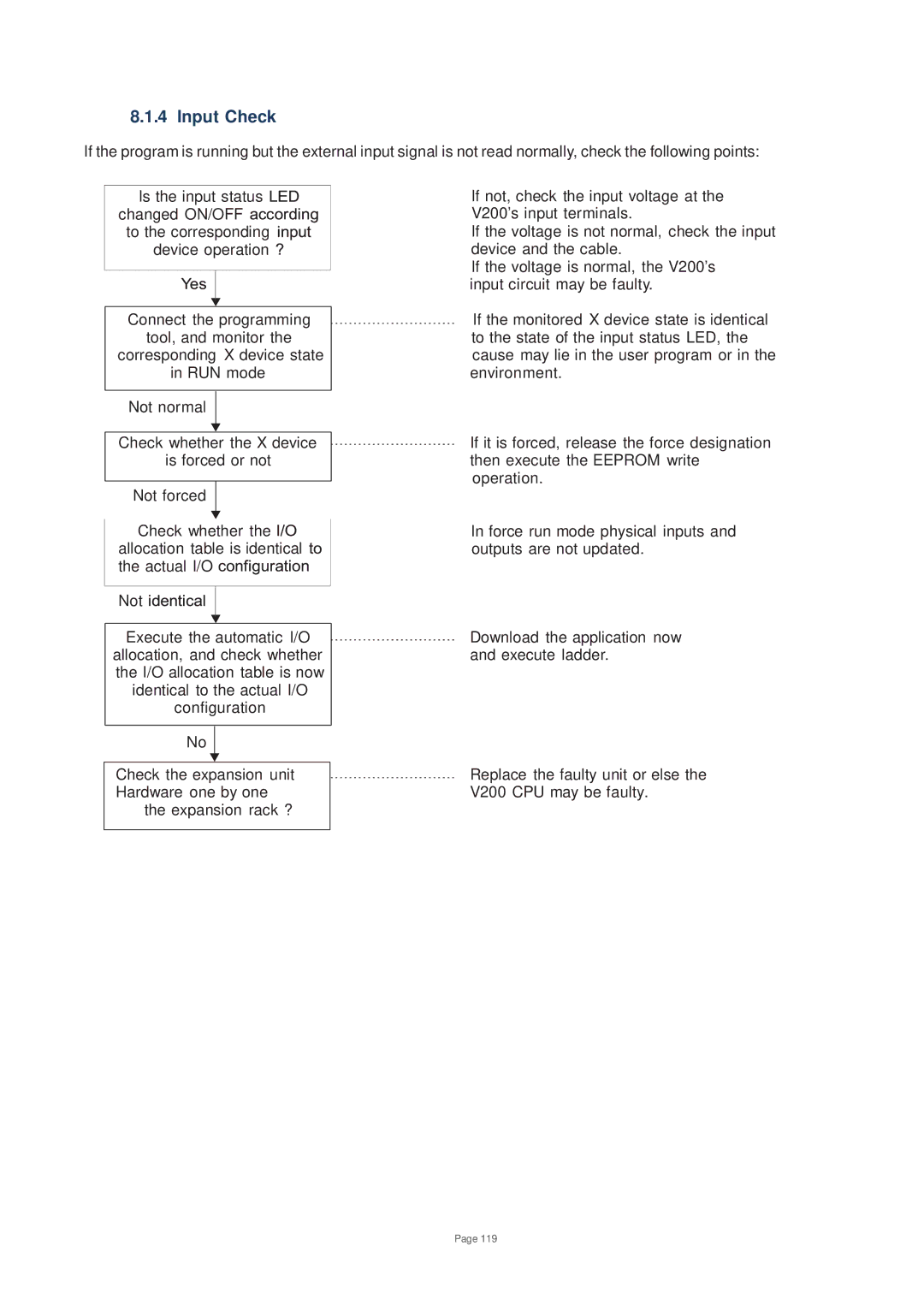
8.1.4 Input Check
If the program is running but the external input signal is not read normally, check the following points:
Is the input status ![]() changed ON/OFF
changed ON/OFF ![]()
![]() to the corresponding
to the corresponding
device operation ![]()
Connect the programming
tool, and monitor the corresponding X device state in RUN mode
Not normal
Check whether the X device
is forced or not
Not forced
Check whether the ![]() allocation table is identical
allocation table is identical ![]() the actual I/O
the actual I/O ![]()
![]()
Not ![]()
![]()
Execute the automatic I/O allocation, and check whether the I/O allocation table is now identical to the actual I/O configuration
No
Check the expansion unit Hardware one by one
the expansion rack ?
If not, check the input voltage at the V200’s input terminals.
If the voltage is not normal, check the input device and the cable.
If the voltage is normal, the V200’s input circuit may be faulty.
If the monitored X device state is identical to the state of the input status LED, the cause may lie in the user program or in the environment.
If it is forced, release the force designation then execute the EEPROM write operation.
In force run mode physical inputs and outputs are not updated.
Download the application now and execute ladder.
Replace the faulty unit or else the V200 CPU may be faulty.
Page 119
